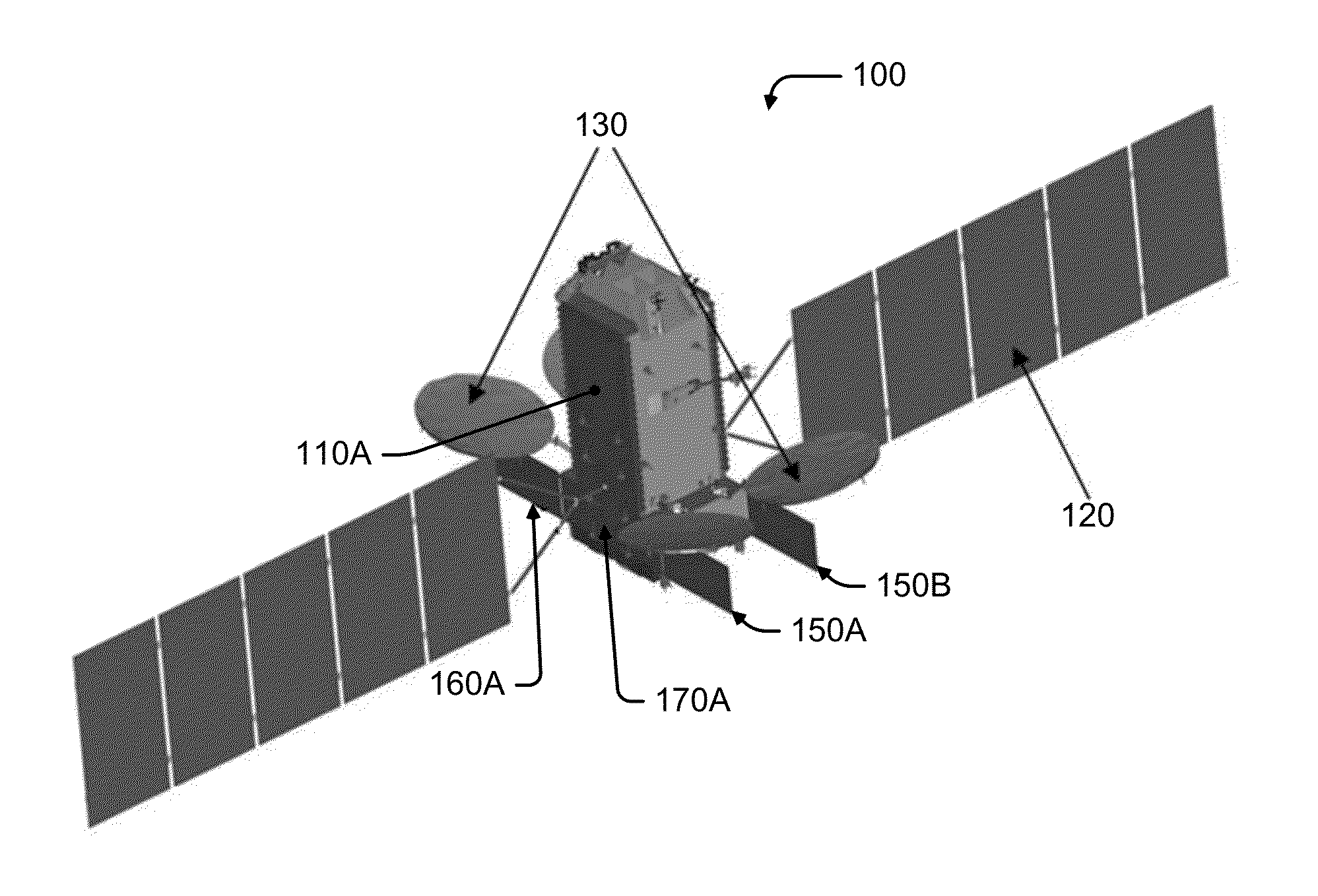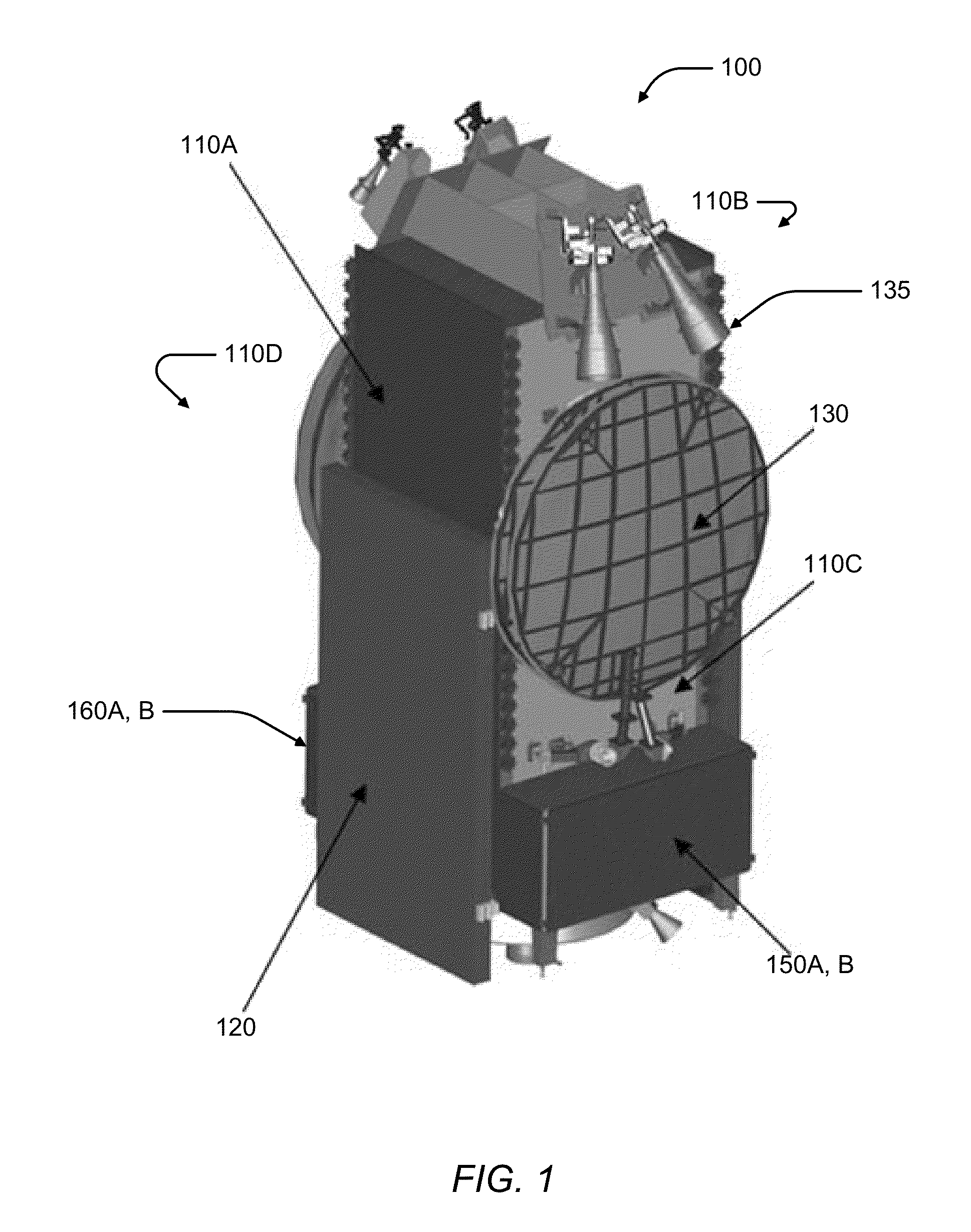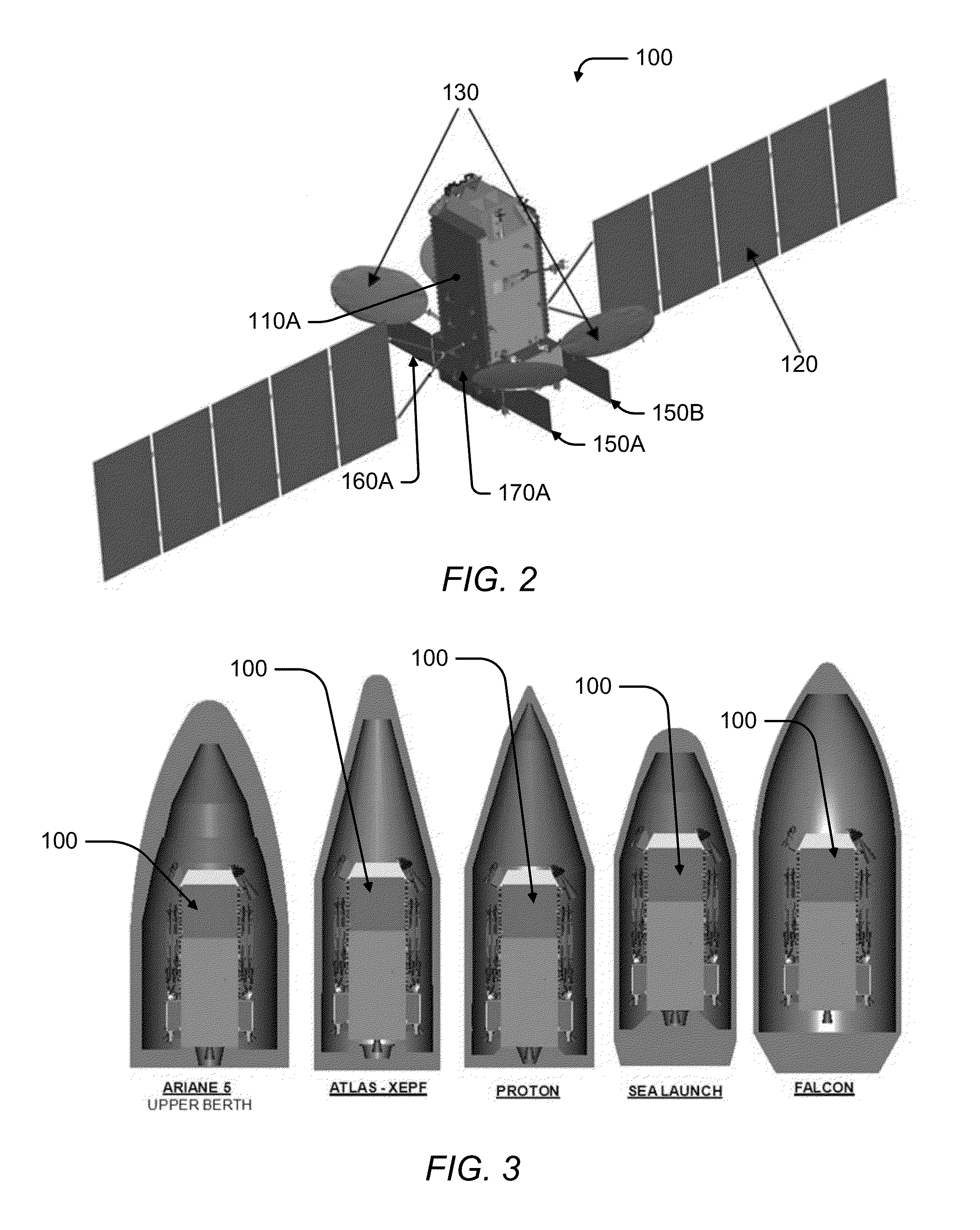Deployable radiator having an increased view factor
a technology of view factor and deployable radiator, which is applied in the direction of cosmonautic thermal protection, transportation and packaging, cosmonautic vehicles, etc., can solve the problems of reducing the thermal rejection capacity of deployable radiators, complicating the design of deployable radiators and its internal heat pipe arrangement, and improving the thermal rejection capability of deployable radiators. , the effect of simple internal heat pipe arrangemen
- Summary
- Abstract
- Description
- Claims
- Application Information
AI Technical Summary
Benefits of technology
Problems solved by technology
Method used
Image
Examples
Embodiment Construction
[0027]In the following detailed description, numerous specific details are set forth to provide a full understanding of the subject technology. It will be apparent, however, to one ordinarily skilled in the art that the subject technology may be practiced without some of these specific details. In other instances, well-known structures and techniques have not been shown in detail so as not to obscure the subject technology. Like components are labeled with identical element numbers for ease of understanding.
[0028]Various aspects of the subject technology provide a method for cooling a GEO spacecraft without interfering with solar arrays and communication antennas, thereby increasing the thermal rejection capabilities of the deployable radiators by minimizing clearance cutouts. In one aspect, the design of the deployable radiators and their respective internal heat pipe arrangement is less complicated, and therefore more economical, than conventional GEO spacecraft.
[0029]FIG. 1 illus...
PUM
| Property | Measurement | Unit |
|---|---|---|
| angle | aaaaa | aaaaa |
| angle | aaaaa | aaaaa |
| angle | aaaaa | aaaaa |
Abstract
Description
Claims
Application Information
 Login to View More
Login to View More - R&D
- Intellectual Property
- Life Sciences
- Materials
- Tech Scout
- Unparalleled Data Quality
- Higher Quality Content
- 60% Fewer Hallucinations
Browse by: Latest US Patents, China's latest patents, Technical Efficacy Thesaurus, Application Domain, Technology Topic, Popular Technical Reports.
© 2025 PatSnap. All rights reserved.Legal|Privacy policy|Modern Slavery Act Transparency Statement|Sitemap|About US| Contact US: help@patsnap.com



